38 bad fats on food labels
Know the facts about fats - Harvard Health 19.4.2021 · These fats tend to more "solid" (think butter or lard) than healthier fats. Unsaturated. This is the healthy kind, and there are two types: monounsaturated and polyunsaturated. Monounsaturated fats are found in avocados and peanut butter; nuts like almonds, hazelnuts, cashews, and pecans; and seeds, such as pumpkin, sesame, and sunflower seeds. Fat | Eat For Health Eating trans fats increases the levels of ‘bad’ cholesterol and decreases the levels of ‘good’ cholesterol in the body which is a major risk factor for heart disease. ... Use food labels to compare foods and choose those with fewer trans fats. It is great for health to replace saturated and trans fats with mono and polyunsaturated fats.
Good Fats vs. Bad Fats: Everything You Need to Know - Healthline Labeling laws allow food companies to round down to zero and claim "no trans fats" or "zero grams of trans fats" if the amount per serving is less than 0.5 g, despite still containing ...
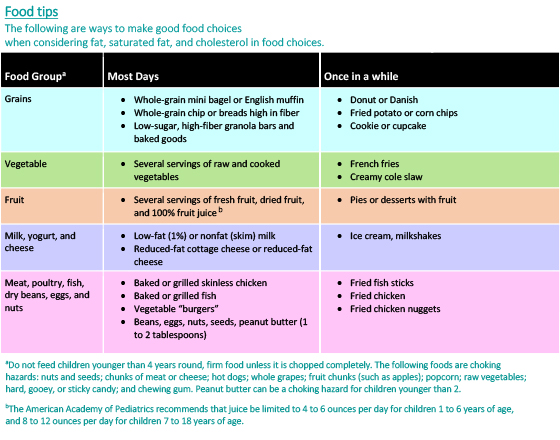
Bad fats on food labels
Dietary fats explained: MedlinePlus Medical Encyclopedia 13.7.2020 · The fats your body gets from your food give your body essential fatty acids called linoleic and linolenic acid. ... Saturated fats raise your LDL (bad) cholesterol level. High LDL cholesterol puts you at risk for heart attack, ... It is important to read nutrition labels on foods. This will help you know what kinds of fats, ... Clean Fats Vs. Bad Fats - Giant Sports International This includes vegetable shortening and margarine, and while you're at it, avoid foods that are packaged or processed as well, along with any fried foods, because nearly 100% of these types of food will have the unhealthy fats in them in some quantity or form. › en › healthy-livingUnderstanding Ingredients on Food Labels | American Heart ... Mar 06, 2017 · There are many terms used for sugar on food labels. You might see sugar listed as the fourth ingredient in a product and think it’s not so bad. But sugar can also be listed as high-fructose corn syrup or corn syrup, agave nectar, barley malt syrup or dehydrated cane juice, to name just a few. Read more about sugar and sweeteners.
Bad fats on food labels. Food Labels: Fat & Cholesterol | Home & Garden Information Center Eating too much total fat, saturated fat, trans fat or cholesterol may increase your risk of certain chronic diseases, like heart disease, high blood pressure and some cancers. Facts on Food Labels Food labels contain clues to a food's fat and cholesterol content, including the amount per serving. 8 Ways Your Nutrition Label Is Misleading You - Taste of Home 7. Zero Trans Fat. Artificial trans fats are the worst of all fats, increasing the risk of heart attack, stroke, diabetes and other health problems. The FDA has finalized its decision to eliminate trans fats from food, but manufacturers have until 2018 to meet the new standards. So for now, be leery of "0 trans fat" claims. Fat Content on Food Labels - Reading Between the Lines The Mayo Foundation continued, "Still, you may be able to tell if a product contains trans fat, even if it's not directly listed on the food label. Look for the words ' hydrogenated ' or 'partially hydrogenated' in the list of ingredients. These terms indicate that the product contains trans fat. What Are the Fats Not Listed on Nutrition Labels? - SFGATE Vegetable oils, especially canola, olive and peanut oils, almonds, hazelnuts, pecans, pumpkin seeds and sesame seeds are all good sources of monounsaturated fats. Polyunsaturated Fats...
How to Read a Food Label & How to Find Unhealthy Hidden Ingredients These types of fats help children absorb vitamins and compliment cognitive skills. However, too much of any fat can be burdensome and lead to weight gain. Now when reading a food label, you need to make sure that the product does not have too much saturated fat; and that it does not have any trans fats. Trans fats should be avoided. Trans Fat 7 Hidden Messages In Packaged Food Labels — Eat This Not That As for trans fat, while some trans fats are created naturally in some foods (but in very small amounts), most items with partially hydrogenated trans fat can increase blood cholesterol, LDL cholesterol, and triglyceride levels. In short, it could increase your risk of cardiovascular disease. In short, be wary of items with a high trans-fat count. › article › 363276-food-groupsFood Groups for Carbohydrates, Proteins, Fats, Vitamins and ... Apr 02, 2020 · According to the National Center for Health Research (NCHR), the USDA recently replaced the food pyramid that was introduced years ago. Instead of the pyramid shape — which the NCHR says was criticized for confusing consumers — the new "ChooseMyPlate" recommendation contains five food groups of unequal sections, which include a hearty mix of carbohydrates (fruits and vegetables), proteins ... What is Fat? - Good Fats and Bad Fats | SkillsYouNeed Dietary fats make food tasty they often improve the texture of food as well as flavour and smell - they make food more appealing. In the UK, the Department of Health suggests that no more than 35% of total calories should come from fat. In the US, recommended fat …
Trans Fats: The Truth in Labeling | Atkins This is a bad rule that needs changing. With small and unrealistic "serving sizes" on the nutrition facts label, each of which contains just under ½ a gram, you could easily wind up consuming a gram or two in a typical portion. The regulation allows manufacturers to state that their product is "trans fat free" when in fact, it may not be. Food Labels: 5 Harmful Ingredients To Avoid | ThePostGame.com Here are some of the worst ingredients that are added to many foods that you should look out for and avoid: Partially Hydrogenated Oil Partially hydrogenated oil is another name for a trans fat.... 10 Meaningless Food Labels You Keep Falling For | Prevention This claim is often misleading. If a product contains 0.5 grams trans fat or less per serving, the FDA says it's okay for manufacturers to round down to zero on the label. But the WHO says you ... › articles › 318630Processed foods: Health risks and what to avoid May 14, 2020 · Most food needs some degree of processing, and not all processed foods are bad for the body. However, chemically processed foods, also called ultra-processed foods, tend to be high in sugar ...
Which Fats Are Good & Bad for Your Health? - eMediHealth Unsaturated fats are loosely packed fatty acids that bend and move, which is why this fat is commonly liquid at room temperature. Oils are the most recognizable form of unsaturated fat, including olive, canola, or vegetable oil. It is recommended to choose oils over solid fats for a healthy lifestyle. 2. Saturated fat
Food Labeling: Beware the "Health" Halo - Food Network Trans-fat free is defined as a food that contains less than 0.5 grams of trans fat per serving. But be aware that trace amounts of trans fat can be hidden in these foods.
avocadosfrommexico.com › good-fats-and-bad-fatsGood Fats in Avocados | Avocados From Mexico Good fats can also substitute for bad fats in your diet, thereby allowing you to shift to unsaturated fat sources that benefit your body, especially your cardiovascular system (heart and blood vessels). 2015-2020 Dietary Guidelines for Americans recommend switching from bad (saturated) fats to good (unsaturated fats) as your primary fat source ...
Where is unsaturated fat on a food label? Explained by FAQ Blog What is the bad fat on labels? "Bad" fats Saturated and trans fats are bad for you. Less than 7% of your total daily calories should come from saturated fats. Less than 1% should come from trans fats. In a 2,000-calorie daily diet, that's less than 15 grams of saturated fat and less than 2 grams of trans fat.
How to Understand and Use the Nutrition Facts Label | FDA - U.S. Food ... Saturated fat, sodium, and added sugars are nutrients listed on the label that may be associated with adverse health effects - and Americans generally consume too much of them, according to the...
Understanding Food Nutrition Labels | American Heart Association When the Nutrition Facts label says a food contains "0 g" of trans fat, but includes "partially hydrogenated oil" in the ingredient list, it means the food contains some trans fat, but less than 0.5 grams per serving. So, if you eat more than one serving, you could end up eating too much trans fat.
15 Most Deceptive Food Label Terms That Are Fooling You The FDA states that foods with this label must not contain more than two milligrams of cholesterol per serving. If the food's per-serving fat content for main dishes exceeds 19.5 grams or 26 grams for meal products, the total amount of fat per serving must be labeled beside the "cholesterol-free" claim. Keep in mind that not all cholesterol is bad.
What Foods Are High in Fat? High-Fat Foods to Avoid - MedicineNet Read labels when buying packaged products, and choose foods that are "trans fat-free." Avoid buying foods with labels that mention partially hydrogenated vegetable oils, as these may contain some trans fats. ... These foods are rich in bad fats, namely, saturated and trans fats and should be avoided: Deep-fried foods (French fries, fritters ...
Interpreting Total Fat and Types of Fat on Food Labels - Nina Cherie ... Trans fats and, in some cases saturated fats, are considered "unhealthy" or "bad" while monounsaturated and polyunsaturated (omega-3) fats are generally healthier alternatives or "good" fats. Saturated fats are naturally found in animal-based foods including meats, dairy products and eggs.
medlineplus.gov › ency › patientinstructionsFacts about polyunsaturated fats - MedlinePlus Overall, eliminating saturated fats is twice as effective in lowering blood cholesterol levels as increasing polyunsaturated fats. READING NUTRITION LABELS. All packaged foods have nutrition labels on them that include fat content. Reading food labels can help you keep track of how much fat you eat a day. Check the total fat in one serving.
Food Label Detective: How to Spot the Good Fats Both saturated fat and trans fat amounts are clearly listed underneath "Total Fat," although some foods labeled trans fat-free may still contain small amounts (up to 0.5 grams) of trans fat. That's why it's important to also check a food's ingredient list. Avoid foods that contain "partially hydrogenated oil," which means trans fat is present.
Healthy Eating As You Age: Know Your Food Groups 25.2.2022 · Understanding the different food groups — and how much of each should make up your diet — can help you form a healthy eating pattern over time. This article describes the main food groups and other important nutrients recommended for older adults in the Dietary Guidelines for Americans (PDF, 30.6M).
Often no difference between good and bad fats. On some food labels, there is also just an indication of how much fat is contained in a product but there is no differentiation between good and bad fats. Even though all kinds of fats contain a similar amount of calories, there are still huge differences regarding their health effects. ...
medlineplus.gov › ency › patientinstructionsFacts about monounsaturated fats: MedlinePlus Medical ... May 26, 2020 · But eating too much fat can lead to weight gain. All fats contain 9 calories per gram of fat. This is more than twice the amount found in carbohydrates and protein. It is not enough to add foods high in unsaturated fats to a diet filled with unhealthy foods and fats. Instead, replace saturated or trans fats with healthier, unsaturated fats.
› know-the-facts-about-fatsKnow the facts about fats - Harvard Health Apr 19, 2021 · These fats tend to more "solid" (think butter or lard) than healthier fats. Unsaturated. This is the healthy kind, and there are two types: monounsaturated and polyunsaturated. Monounsaturated fats are found in avocados and peanut butter; nuts like almonds, hazelnuts, cashews, and pecans; and seeds, such as pumpkin, sesame, and sunflower seeds.
Good Fats, Bad Fats :: Diabetes Education Online "Bad" fats increase your risk for coronary heart disease, and need to be limited in your diet: Saturated fats Hydrogenated fats Trans fats Saturated fats, which usually come from animal sources, are naturally solid at room temperature. Examples are lard, butter, milk fat, meat, chicken and pork skin, ice cream and cheese.
Food Labels | CDC - Centers for Disease Control and Prevention All the numbers on this label are for a 2/3-cup serving. This package has 8 servings. If you eat the whole thing, you are eating 8 times the amount of calories, carbs, fat, etc., shown on the label. Total Carbohydrate shows you types of carbs in the food, including sugar and fiber. Choose foods with more fiber, vitamins, and minerals.
Facts about monounsaturated fats - MedlinePlus 26.5.2020 · Monounsaturated fats are liquid at room temperature, but start to harden when chilled. Saturated fats and trans fats are solid at room temperature. These unhealthy fats can increase your risk for heart disease and other health problems. Monounsaturated fats are found in plant foods, such as nuts, avocados, and vegetable oils.
7 Nutrition Label Ingredients to Avoid - Walker Methodist Simply replacing trans-fats with healthy fats could decrease your risk of heart disease by 53 percent. Partially Hydrogenated Oils Partially Hydrogenated Oil is another form of trans-fat to watch out for on nutrition labels. This type of trans-fat is known to clog arteries and contribute to obesity and heart disease. High Fructose Corn Syrup (HFCS)
Top 10 High Fat Foods to Avoid - myfooddata Read ingredient labels and avoid any trans or partially hydrogenated fats or oils. High-fat foods to avoid include fast foods, whipped cream, fatty meats, fried foods, fatty snacks, processed meats, desserts, fatty salad dressings, animal fats, and trans-fats. ( 1) The daily value (DV) for fat is 78 grams per day. ( 2)
Understanding Ingredients on Food Labels - American Heart … 6.3.2017 · There are many terms used for sugar on food labels. You might see sugar listed as the fourth ingredient in a product and think it’s not so bad. But sugar can also be listed as high-fructose corn syrup or corn syrup, agave nectar, barley malt syrup or dehydrated cane juice, to name just a few. Read more about sugar and sweeteners.
8 misleading food marketing labels | AGDAILY Because only sodium and potassium nitrate and nitrite are considered to be curing agents, processed meats that are cured using naturally occurring nitrates and nitrites derived from sea salt, celery or beets or some other vegetable or fruit naturally high in nitrate are required to be labeled as "uncured."
Food Groups for Carbohydrates, Proteins, Fats, Vitamins and … 2.4.2020 · According to the National Center for Health Research (NCHR), the USDA recently replaced the food pyramid that was introduced years ago. Instead of the pyramid shape — which the NCHR says was criticized for confusing consumers — the new "ChooseMyPlate" recommendation contains five food groups of unequal sections, which include a hearty mix of …
Processed foods: Health risks and what to avoid - Medical News … 14.5.2020 · Most food needs some degree of processing, and not all processed foods are bad for the body. However, chemically processed foods, also called ultra-processed foods, tend to be high in sugar ...
Good Fats in Avocados | Avocados From Mexico Good fats can also substitute for bad fats in your diet, thereby allowing you to shift to unsaturated fat sources that benefit your body, especially your cardiovascular system (heart and blood vessels). 2015-2020 Dietary Guidelines for Americans recommend switching from bad (saturated) fats to good (unsaturated fats) as your primary fat source in your food.
Easy Guide to Understanding Food Labels When You Have High ... - MyDoc 1. Choose products low in saturated fat, trans fat and cholesterol. When shopping for food, use the nutrition information panel to compare and choose products with lower fat, saturated fat and cholesterol content. Saturated fat is a type of fat that raises your total and LDL cholesterol and risk of heart disease, so intake should be limited.
Good fats and bad fats - Saga If a food product has these words on the label it must contain 25% less fat than a similar standard product. This can still mean a lot of fat! Read the label carefully to see how much fat there is in 100g of the food. Less than 5% fat - or 95% fat free This means that the food has less than 5g of fat per 100g.
› en › healthy-livingUnderstanding Ingredients on Food Labels | American Heart ... Mar 06, 2017 · There are many terms used for sugar on food labels. You might see sugar listed as the fourth ingredient in a product and think it’s not so bad. But sugar can also be listed as high-fructose corn syrup or corn syrup, agave nectar, barley malt syrup or dehydrated cane juice, to name just a few. Read more about sugar and sweeteners.
Clean Fats Vs. Bad Fats - Giant Sports International This includes vegetable shortening and margarine, and while you're at it, avoid foods that are packaged or processed as well, along with any fried foods, because nearly 100% of these types of food will have the unhealthy fats in them in some quantity or form.
Dietary fats explained: MedlinePlus Medical Encyclopedia 13.7.2020 · The fats your body gets from your food give your body essential fatty acids called linoleic and linolenic acid. ... Saturated fats raise your LDL (bad) cholesterol level. High LDL cholesterol puts you at risk for heart attack, ... It is important to read nutrition labels on foods. This will help you know what kinds of fats, ...

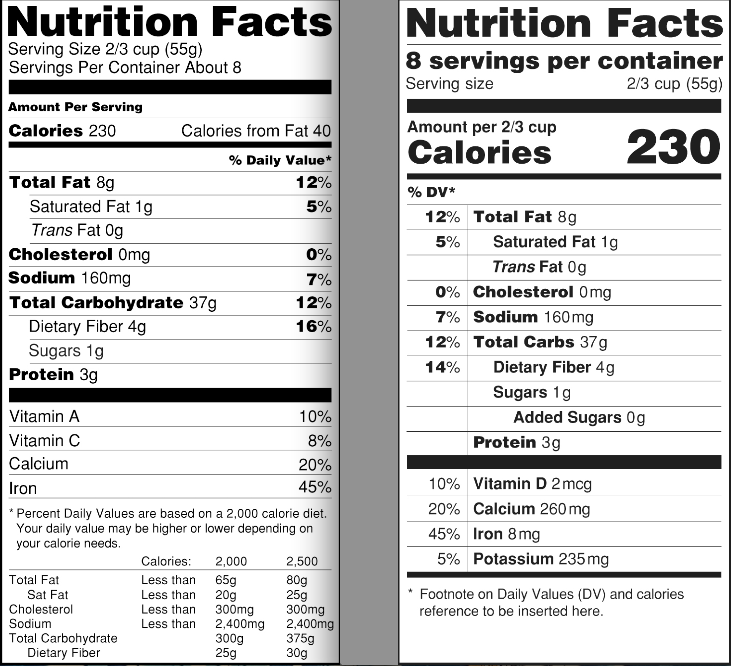


:max_bytes(150000):strip_icc()/Untitled-design-1--575368573df78c9b4691365f.jpg)

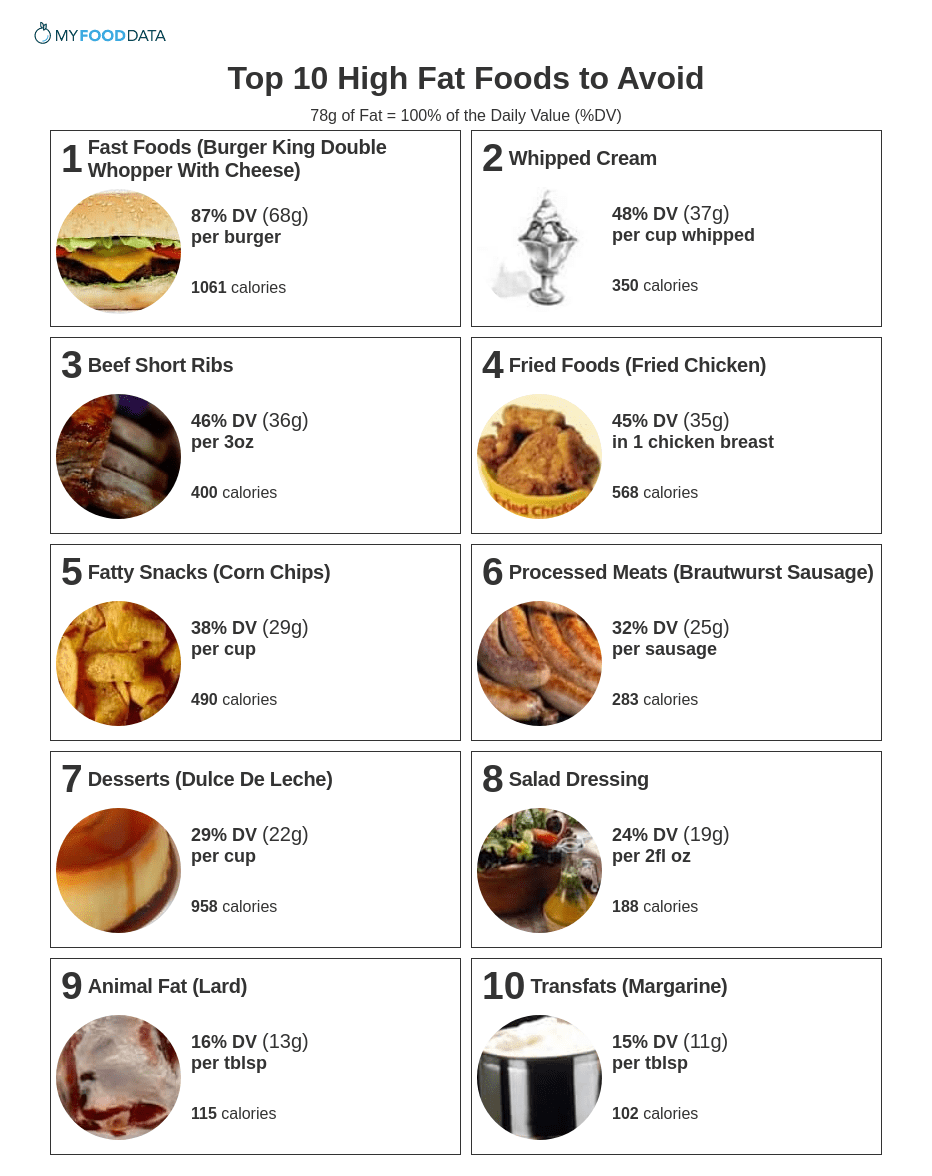




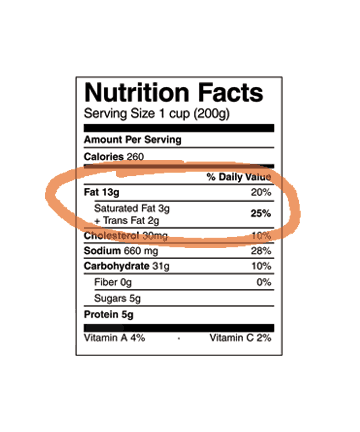
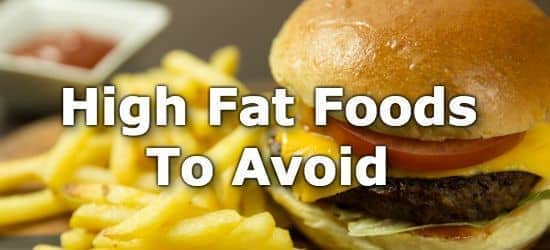
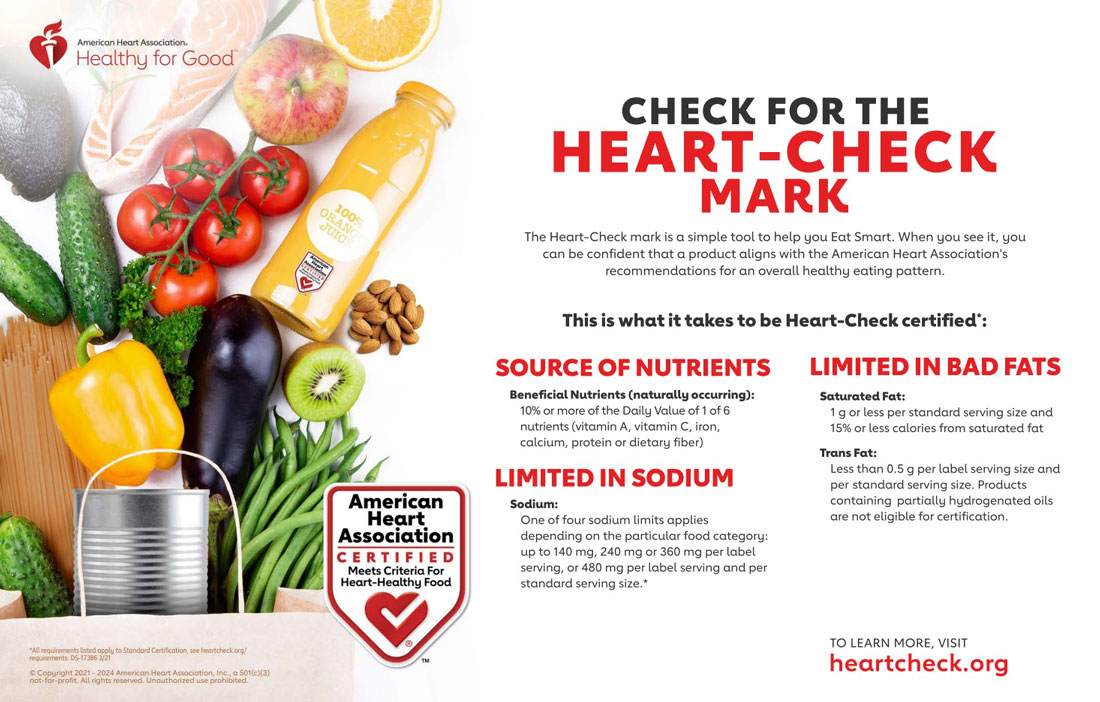


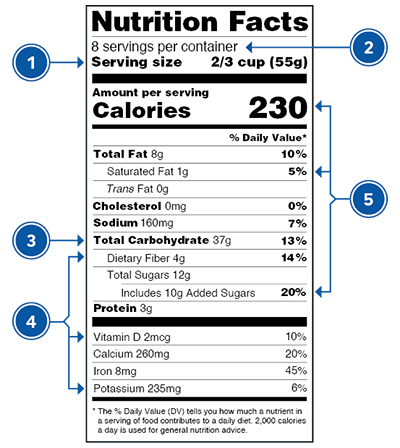


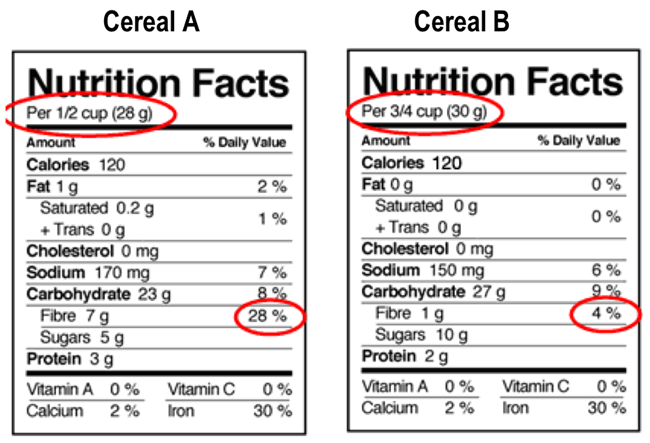


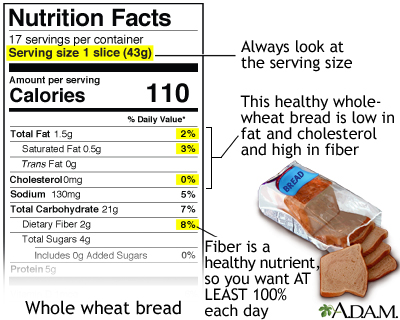
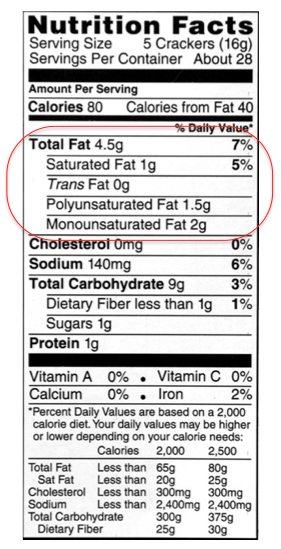
/Healthy-Fats-Food-GettyImages-1301412044-2000-8ab23a10624d42df85fa3f37d7c76a6b.jpg)



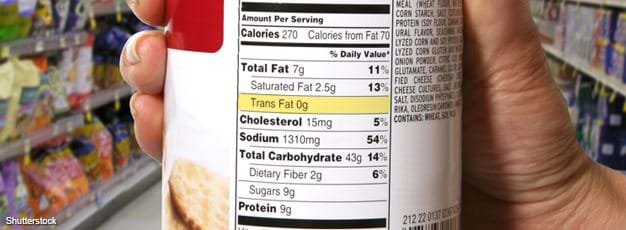



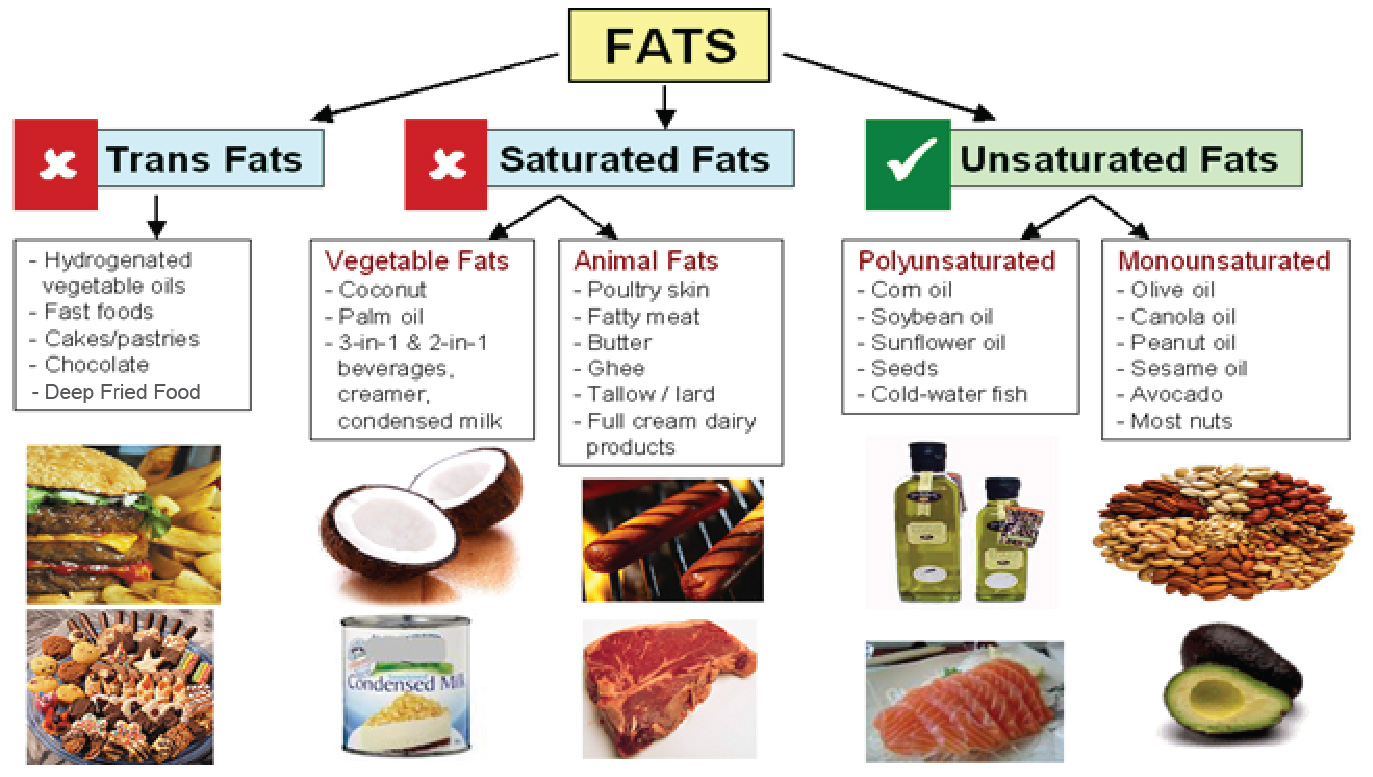
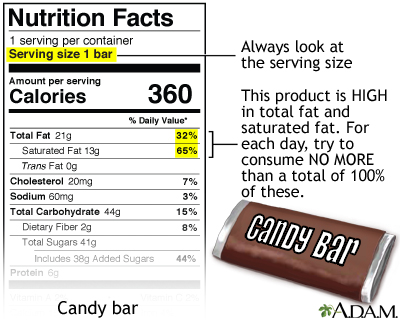
Post a Comment for "38 bad fats on food labels"